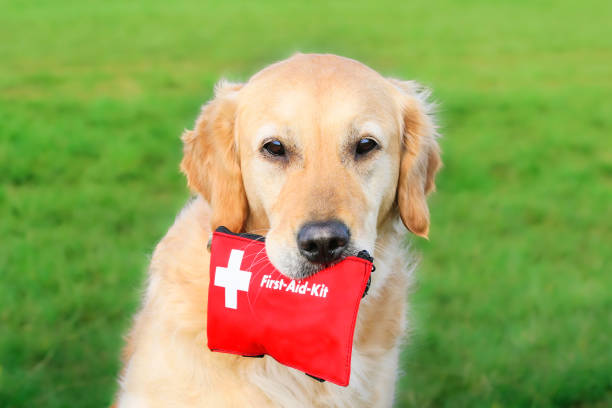Embarking on a rugged overlanding adventure is an exhilarating journey that promises breathtaking landscapes, thrilling challenges, and unforgettable memories. Unfortunately, one essential thing that’s often overlooked is assembling a first aid kit.
In the thrill of overlanding, where the unexpected can swiftly become a reality, a well-prepared first aid kit is your silent guardian. With a well-assembled first aid kit, you can easily tend to minor scrapes, discomforts, and unforeseen incidents.
However, the truth is that not everyone may know the best way to assemble a first aid kit for Overlanding. This is why we’ve put together this guide to walk you through the intricacies of curating a first aid kit tailored to the demands of overlanding.
First Aid Kit Essentials
Below are the essential things you must include in your first aid kit, regardless of where or how far you travel.
- Adhesive bandages
- Antiseptic wipes
- Compression bandage
- Antibacterial ointment (e.g., bacitracin)
- Butterfly bandages / adhesive wound-closure strips
- Compound tincture of benzoin
- Irrigation syringe
- Gauze (various sizes)
- Ibuprofen and paracetamol
- Nonstick sterile pads
- Medical adhesive tape (10 yd. roll, min. 1-inch width)
- Antidiarrheal pills
- Blister treatment
- Eye drops
- Splinter (fine-point) tweezers
- Insect sting / anti-itch treatment
- Latex gloves
- Antihistamine to treat allergic reactions
- Hand sanitizer
- Water treatment tablets
- Safety pins
- SPF 50+ UVA/UVB broad-spectrum sunscreen
- Lip balm
- Bug repellent
- First-aid manual or information cards
The Comprehensive First Aid Kit
Overlanding trips are mostly extended trips. As a result, you may need more than basic supplies in your first aid kit.
Since the longer you stay on an Overlanding trip, the more you risk hurting yourself, the more you will need everything we mentioned above and the ones we’ve listed in this section.
-
Wraps, Splints, and Wound Coverings
Due to the vast landscape people tend to explore while overlanding, there are possibilities for cuts of various degrees. Therefore, it is necessary to include materials like wraps, splints, and wound coverings in your first aid kit.
These versatile tools stabilize fractures, protect wounds, and support strained muscles.
- Elastic wrap
- SAM splint(s)
- Rolled gauze
- Triangular cravat bandage
- First-aid cleansing pads with topical anesthetic
- Finger splint(s)
- Rolled, stretch-to-conform bandages
- Liquid bandage
- Hydrogel-based pads
- Hemostatic (blood-stopping) gauze
-
Additional Medications/Treatments
There’s also the possibility of unexpected health issues arising. This is why it is important to have additional medications and treatments in your first aid kit.
The additional medications can range from pain relievers to allergy medications. These medications expand your ability to manage diverse medical challenges on the go.
- Prescription medications (e.g., antibiotics)
- Glucose or other sugar (to treat hypoglycemia)
- Sunburn relief gel or spray
- Diarrhea medication
- Antacid tablets
- Throat lozenges
- Lubricating eye drops
- Aspirin (primarily for response to a heart attack)
- Oral rehydration salts
- Injectable epinephrine (for severe allergic reactions)
-
Tools and Supplies
Venturing through remote terrain demands self-sufficiency, so tools and supplies are necessary in your first aid kit. Tools and supplies will enable you to address injuries and contingencies swiftly.
- Multitool/Swiss Army Knife/pocket knife
- Cotton-tipped swabs
- CPR mask
- Hand sanitizer
- Biodegradable soap
- Safety razor blade or scalpel
- Standard oral thermometer
- Paramedic shears (blunt-tip scissors)
- Irrigation syringe with 18-gauge catheter
- Small notepad with waterproof pencil or pen
- Medical waste bag (plus box for sharp items)
- Waterproof container to hold supplies and meds
- Emergency heat-reflecting blanket
- Medical/surgical gloves (nitrile preferred; avoid latex)
First Aid Extras for Environmental Conditions
You may also need to consider a few extra elements depending on the environmental condition where you intend to travel.
-
Cold climates
A heat-reflecting emergency blanket is a non-negotiable addition when tackling cold climates during your overlanding trip. You risk suffering from hypothermia on a chilly autumn night without proper gear.
Consider packing a foil blanket. It will help keep you warm in extremely cold conditions.
-
Tropical areas
If traveling across tropical areas most likely to be infested with mosquitoes, fortify your kit with antimalarial pills. Also, consider including high-strength, DEET-based repellent.
Remember to store DEET repellent separately to prevent damage to technical fabrics.
That aside, ensure to include powdered antiseptics and antibiotics. They are handy for tending to wounds amidst humid, tropical conditions.
-
High altitudes
Embarking on high-altitude adventures that are 9000ft or beyond demands tailored provisions for altitude sickness. Equip your kit with headache-relieving ibuprofen and paracetamol.
You may also include acetazolamide and anti-nausea pills.
The Best Way to Pack and Carry Your First Aid Gear
Safeguarding essential supplies requires thoughtful preparation. This is why first-aid dry sacks are a strategic choice. Below are some options you can consider:
- Vividly colored and well-labeled: Choose a red dry sack with a white cross. Anyone will be able to identify it in cases of emergency easily.
- Accessibility: Pick a dry sack with a transparent side window. It will enable you to access the supplies easily.
- Waterproof durability: Ensure that the sack has taped seams and it is 100% waterproof material. Such a type of sack will help protect your gear from dampness.
- Resilient material: Choose abrasion-resistant nylon to preserve the quality of your supplies throughout your journey.
Conclusion
Packing a comprehensive first aid kit can help ensure your safety and peace of mind on every adventure. To embark on these journeys fully equipped, consider the expert gear available at rooftoptents.ca.
From first aid dry sacks to specialized supplies, our range empowers you to conquer the unknown confidently.


